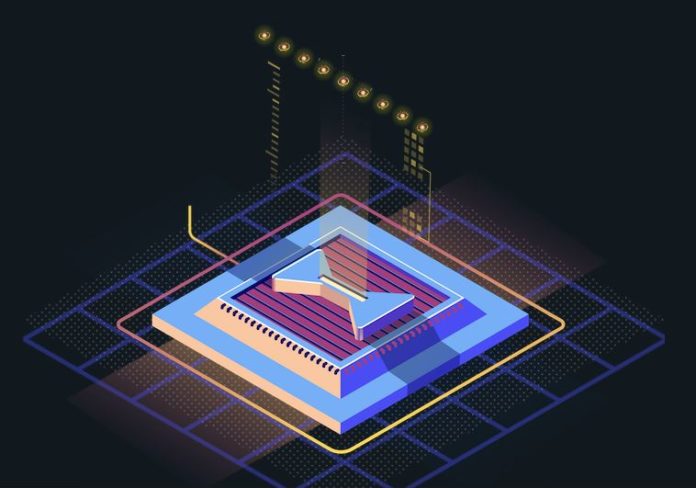At Hot Chips 33, we got a cool presentation on the IonQ quantum computing solution. IonQ has a method to shrink the size and scale-out quantum computing, and it is on its way to becoming the first publicly traded quantum computing startup. For a holiday weekend Friday that may be otherwise slow, let us get into some of the presentation.
IonQ Quantum Computing at Hot Chips 33
We are not going to go too deep into quantum computing basics, but the promise of quantum computing is that by having each qubit able to represent more than just either 0 or 1, the computation can scale at an exponential rate. The trick is that observing the state is destructive and there is a lot of the result that comes down to probability. Part of programming a quantum computer is building a structure that leads to the highest probability of getting to the correct result rather than the incorrect result(s).
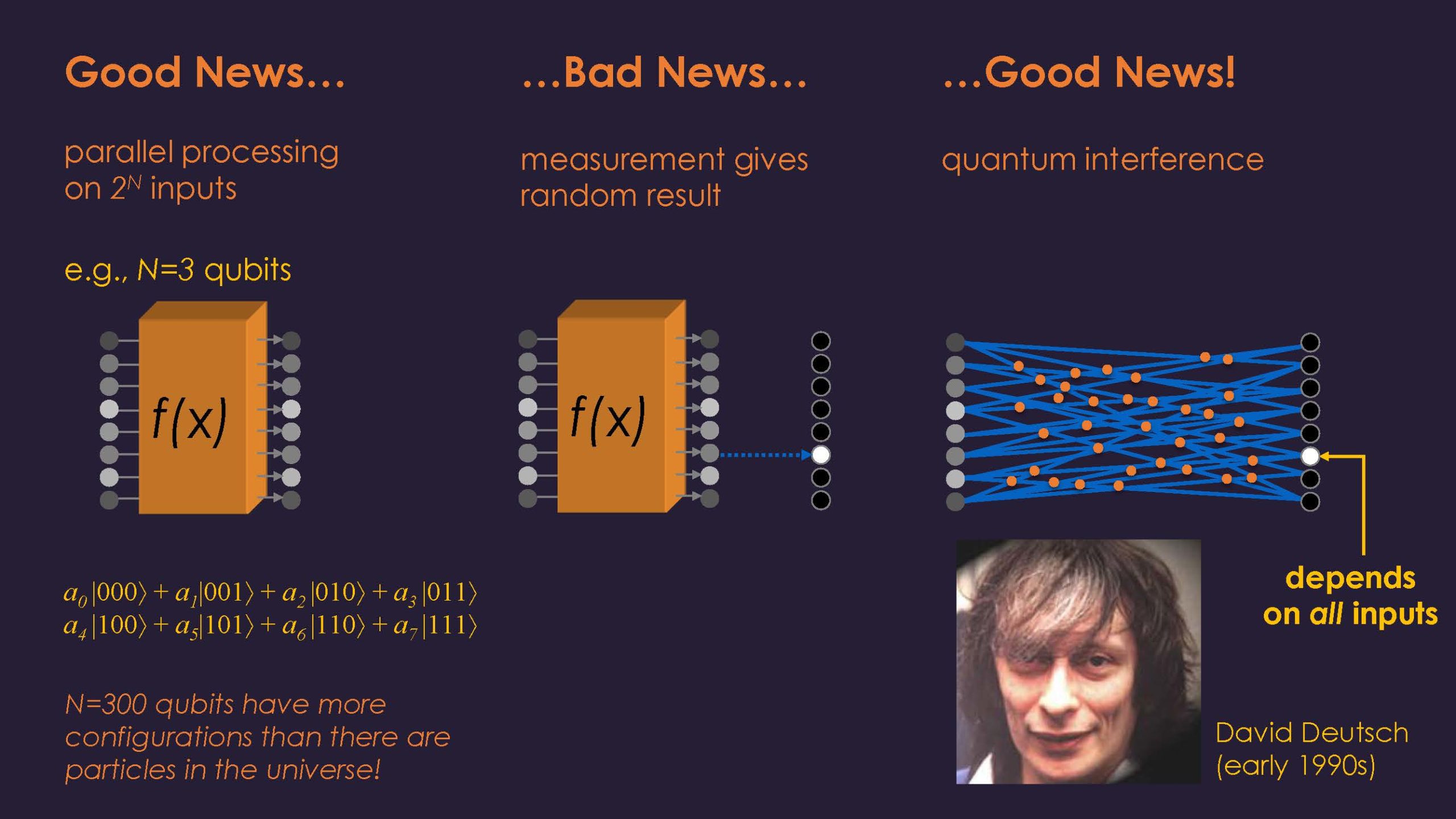
An example of where this can be applied, and where quantum computing will be a game-changer, is encryption. Here, one of the big challenges is factoring big numbers. With quantum, the algorithm is much more efficient. You can see the quantum interference chart above which may help understand how this works.
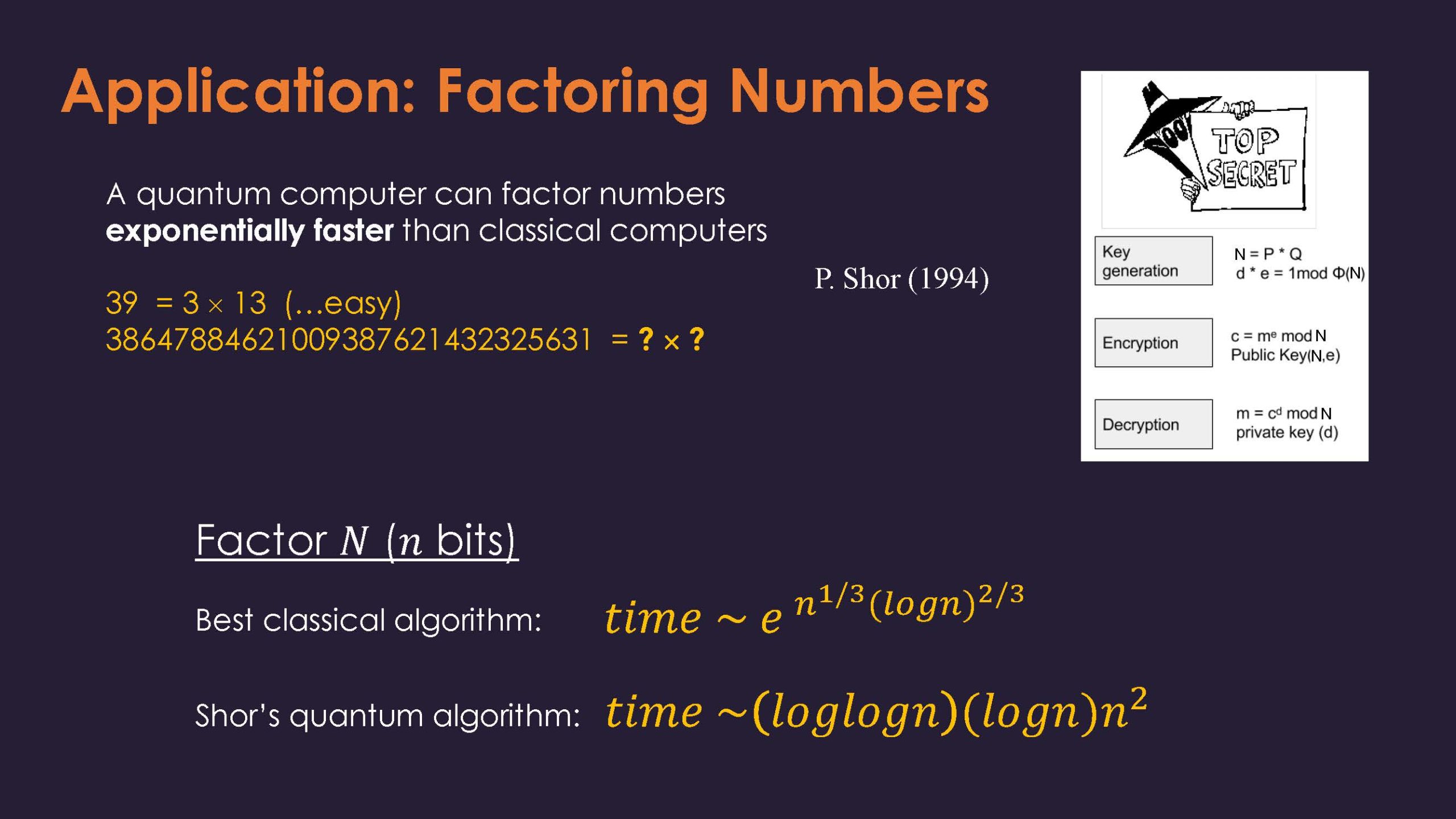
Since one can test multiple cases at once and find optimal solutions easily, other applications are molecular simulations and the classical traveling salesman problem. In the traveling salesman problem, trying to figure out the shortest path is hard if one has to recursively work through a large number of points and possible routes. For quantum, the different points can be evaluated effectively simultaneously, and ideally, the answer is the result with the highest probability of being observed at the end of the computation.
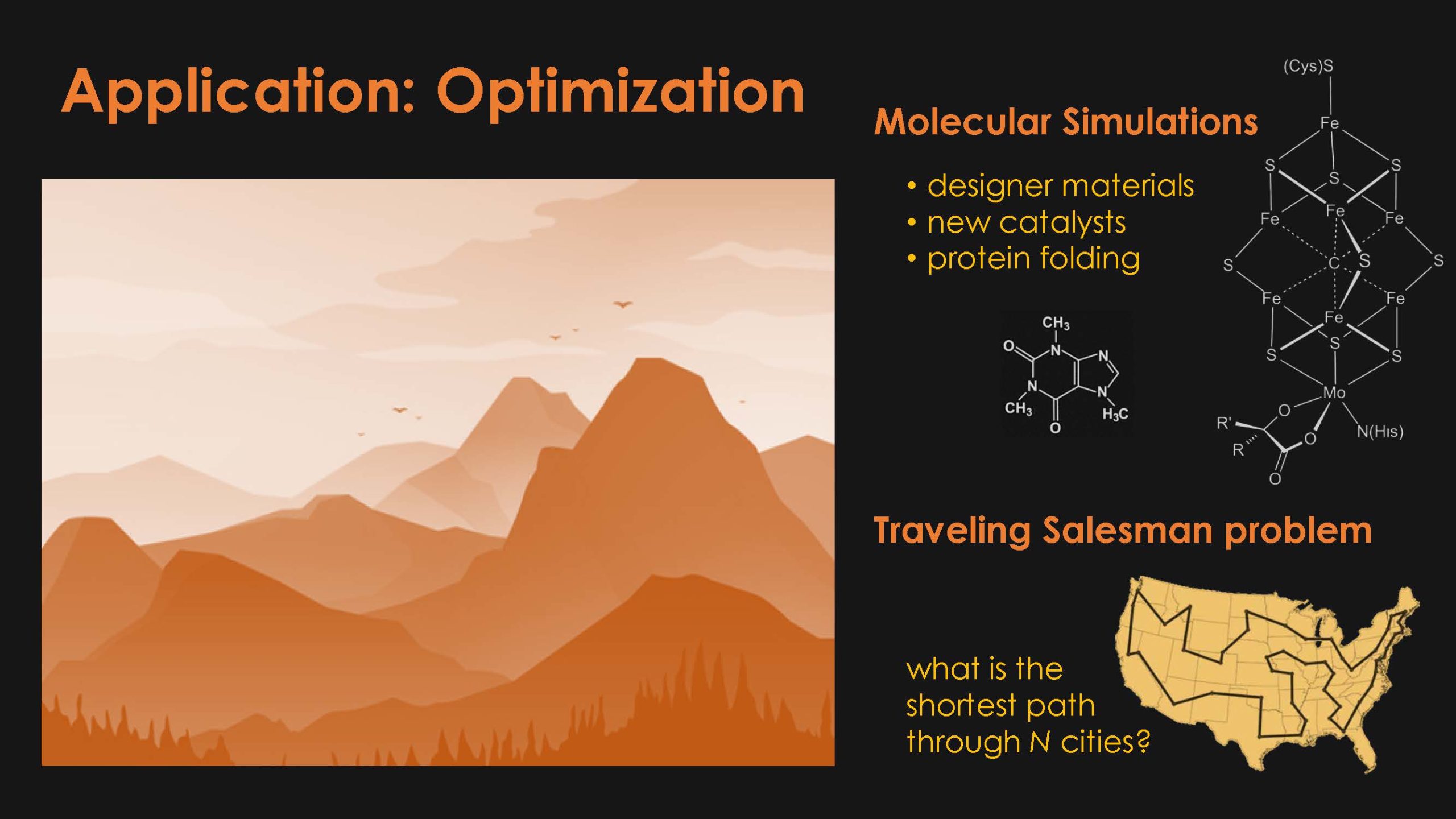
Here is one that may be thought-provoking for many, but quantum compute is completely different from classical compute. We are not sure if we buy this, how do we determine how much it differs? A quantum computer and laptop use electricity. Still, the point is more that that the delta is enormous.
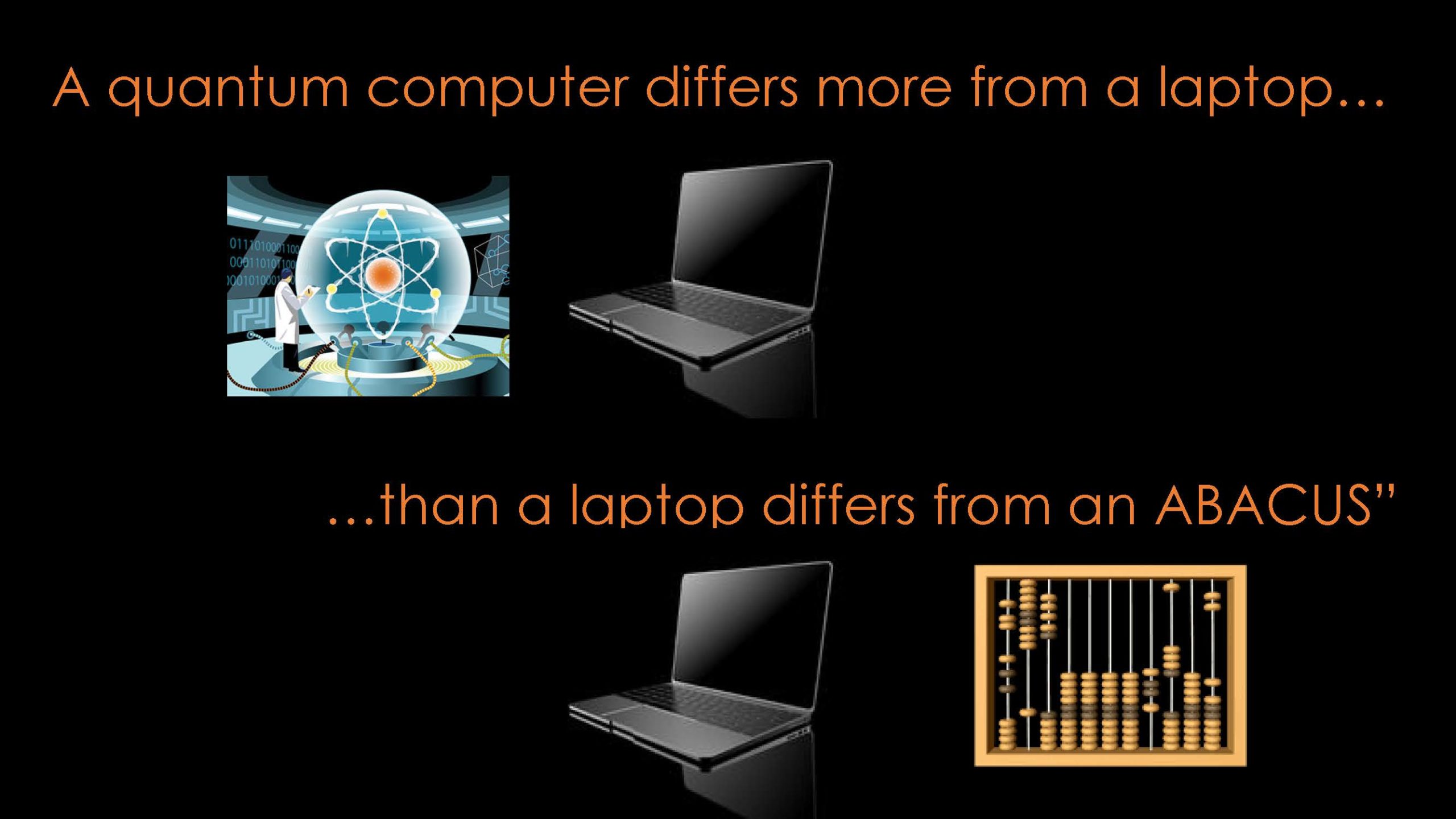
This is a chart showing the current quantum computer technologies. IonQ believes it has the best approach, but it is still early in this field so we can expect more innovation.
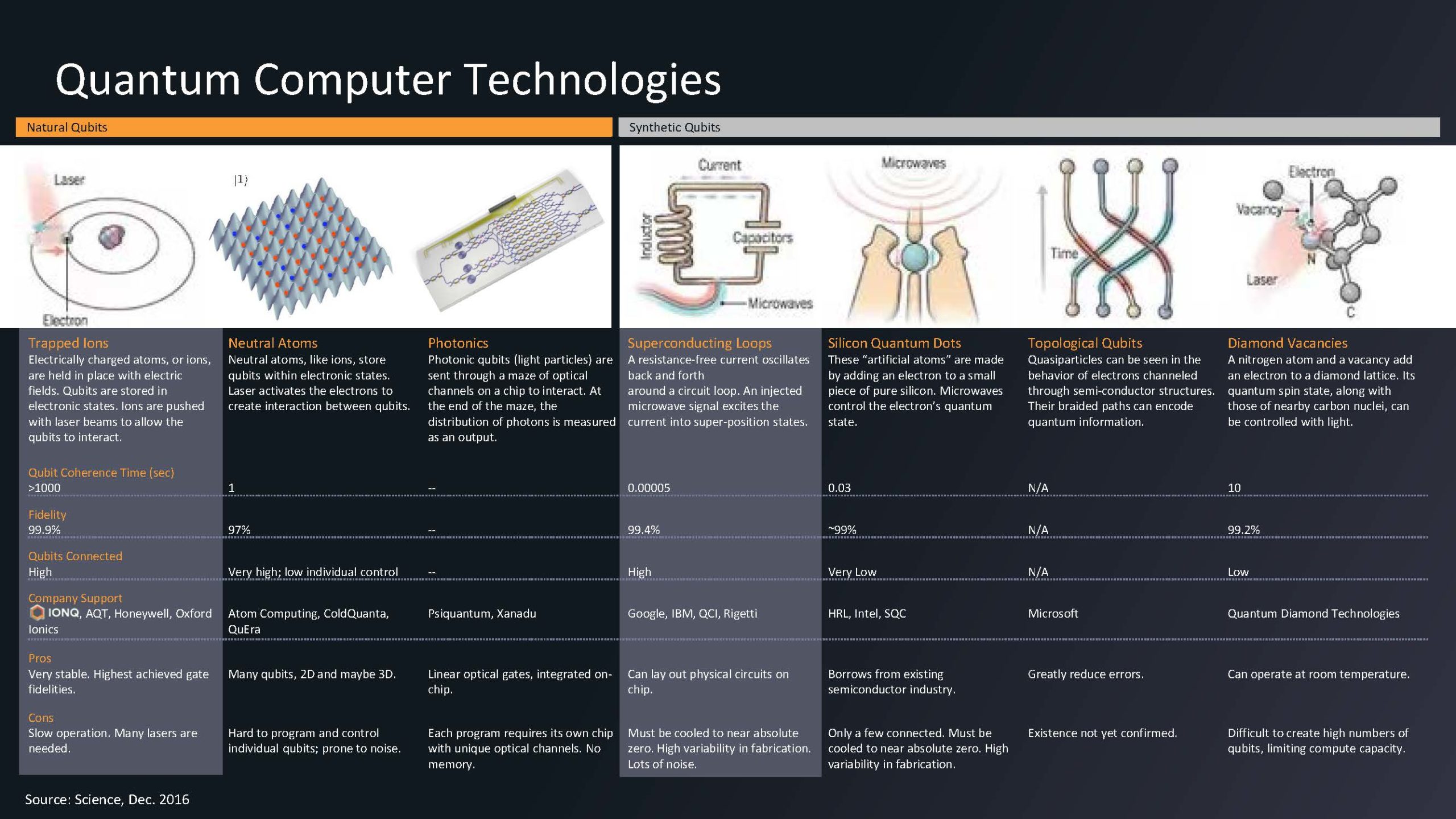
IonQ notes that the trapped ion gate performance is steadily increasing at a rapid pace.
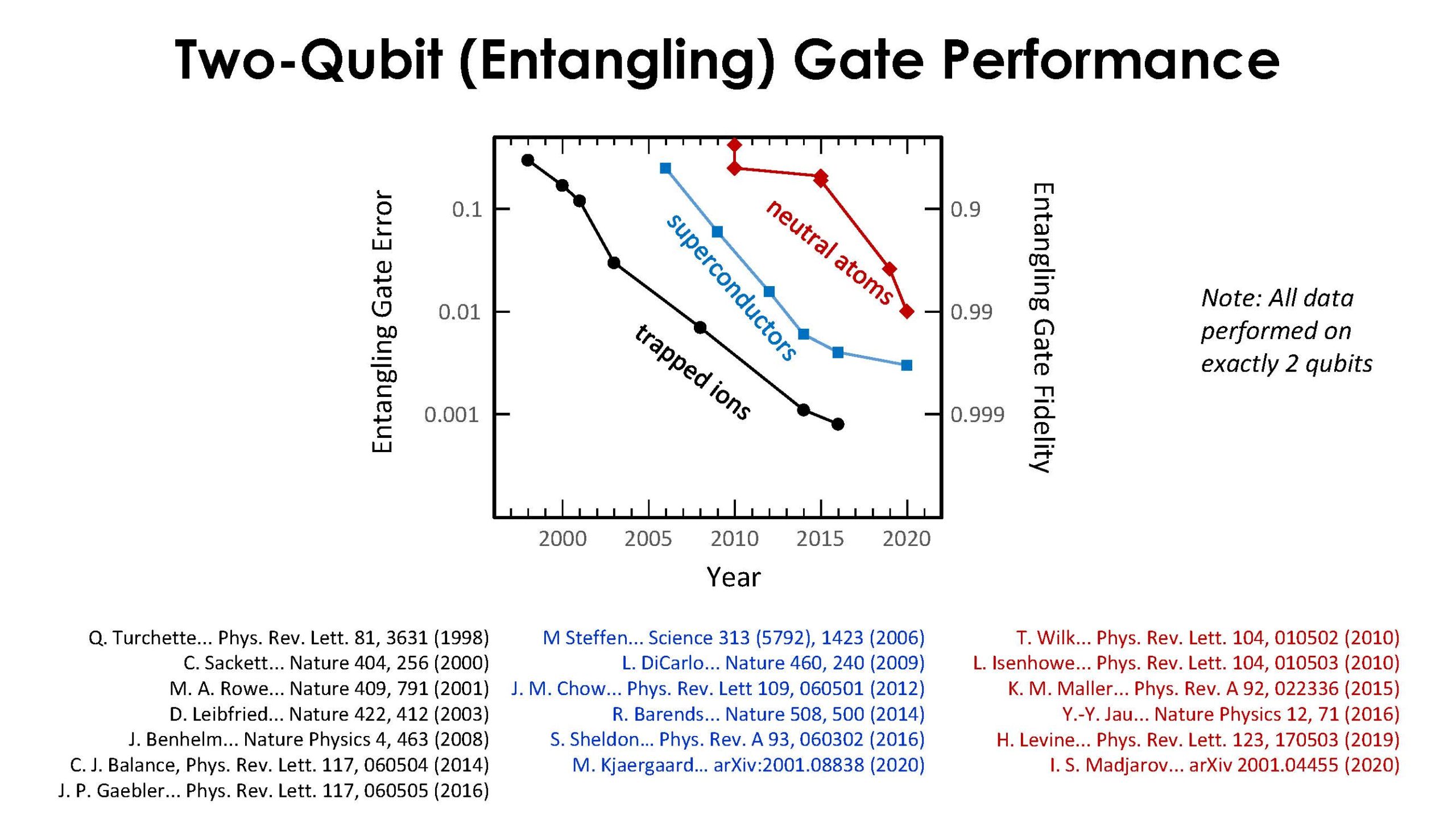
IonQ’s trapped atomic ion quantum computer is different from other solutions. IonQ effectively traps ytterbium atoms (Yb) and then removes an electron using lasers to make ytterbium ions (Yb+.) These ions then are trapped in an electromagnetic trap. The trap uses oscillating voltages to trap via around 100 electrodes to trap the ion in the vacuum portion of the device. These ions are then stored in a linear chain on the chip.
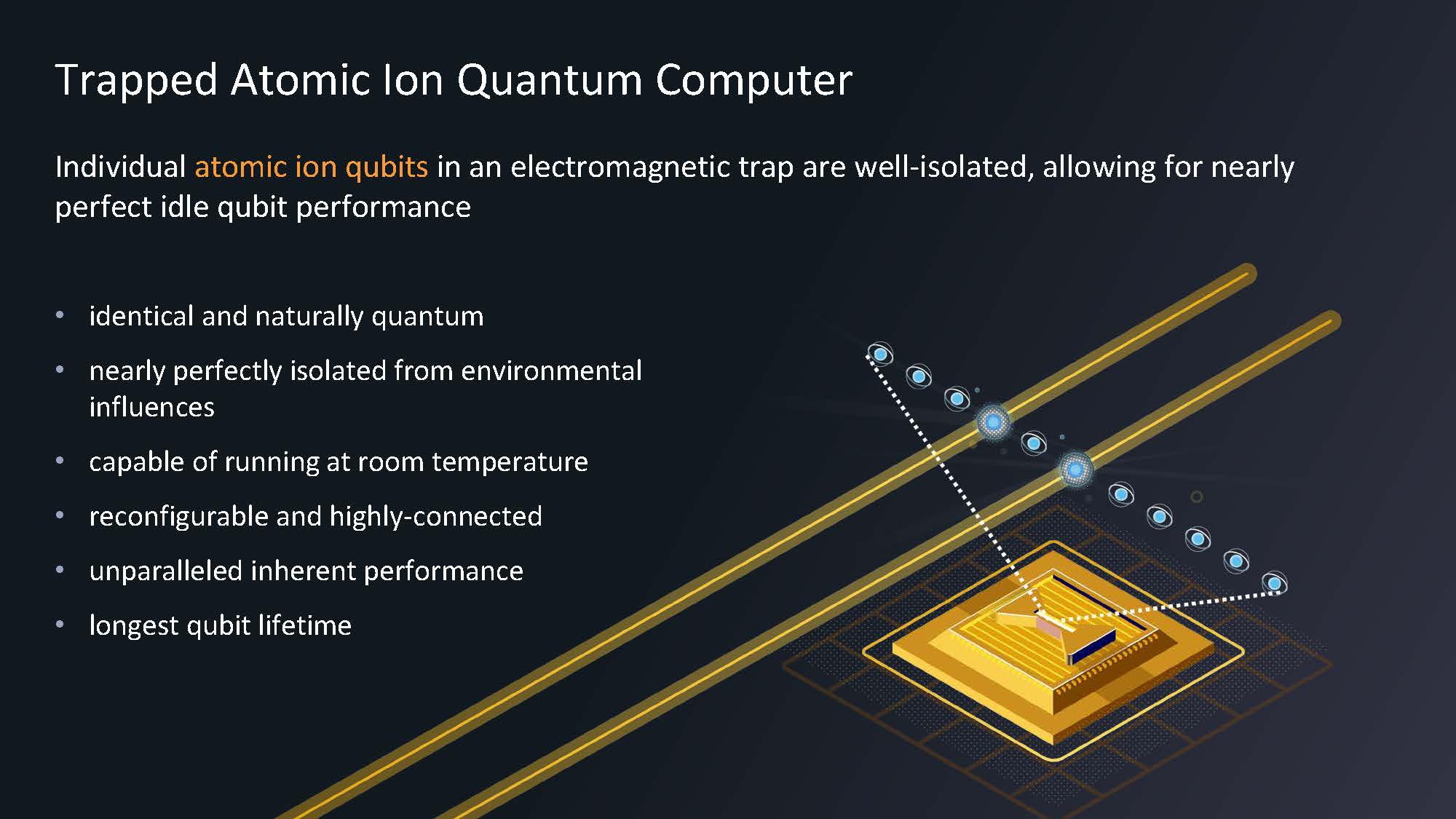
IonQ’s solution, by having a linear chain (IonQ says they have had up to a 79 qubit linear chain) means that they are interacting via electromagnetic repulsion instead of via wire connections. IonQ uses lasers to manipulate the vibrations from the repulsion.
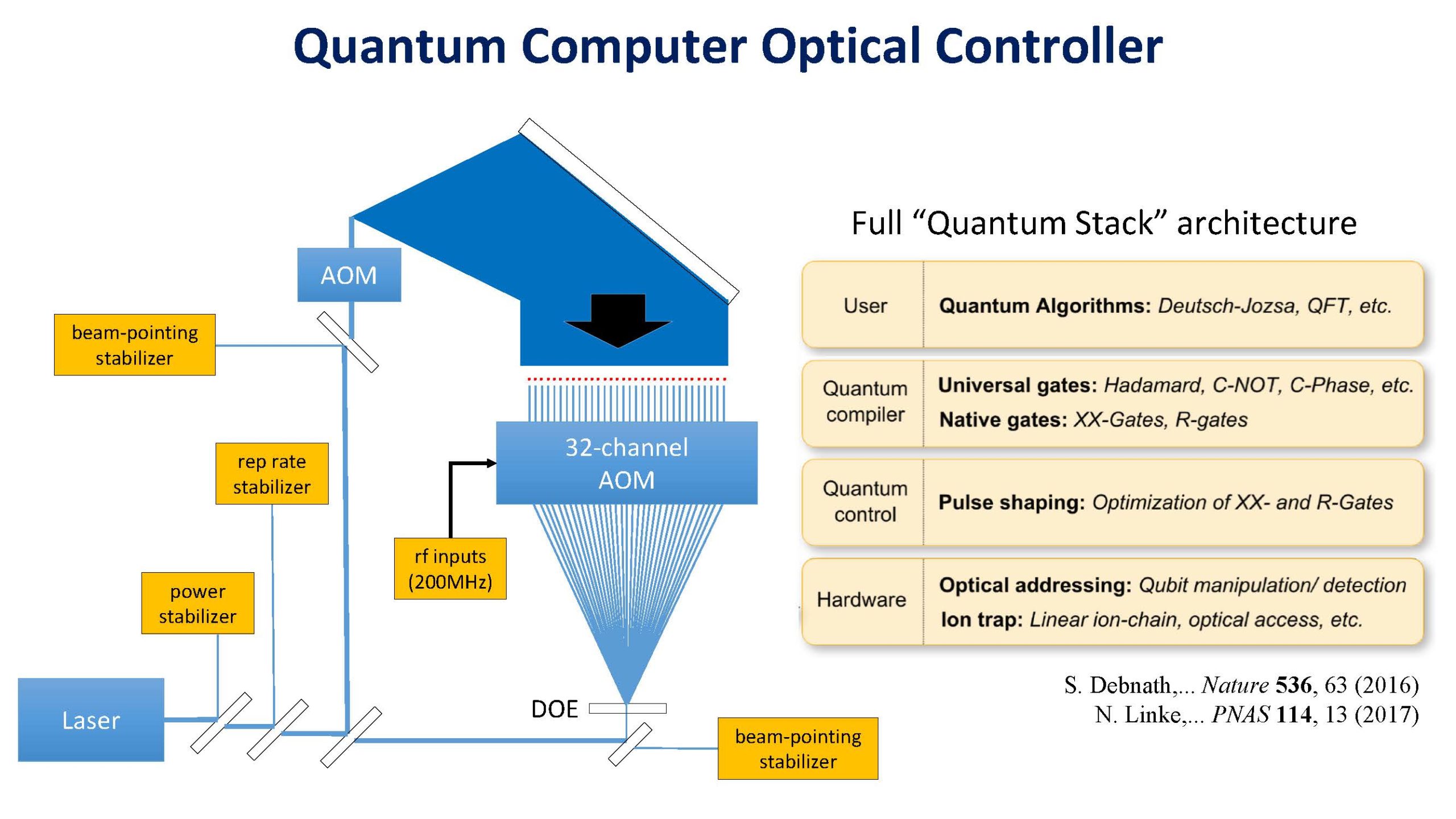
Inside IonQ’s chip, they are using doppler cooling and resolved-sideband cooling (using lasers) to cool the atoms to nearly absolute zero. As we will see later, this approach has a major advantage because it is easier to cool single atoms versus entire assemblies. It is somewhat how decades ago the semiconductor industry tried creating clean fabs free from contamination, but then realized that it was much easier to create clean zones in the machines and handling gear around the wafer fabrication process. As a result, IonQ is able to greatly shrink the size of its quantum computer.
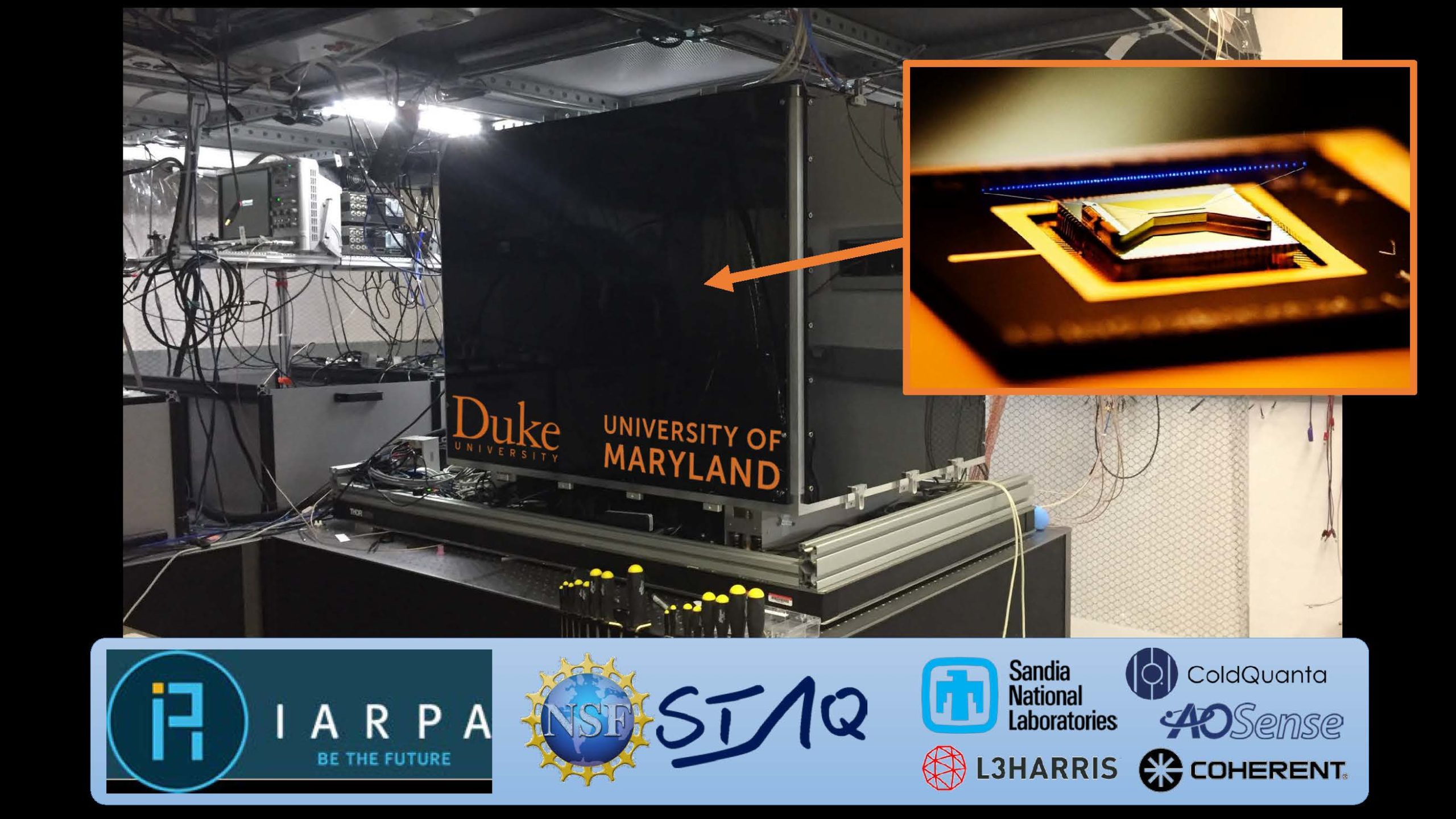
IonQ then uses lasers to modulate the ions and to set them into a zero state followed by getting them in proper states to perform computation. IonQ uses a global beam and individual beams for each ion to intersect at a specific time energy level and point to push ions into rotations or start the entanglement process. IonQ asks the question “science or engineering?” but realistically, to virtually anyone born 100+ years ago this would all sound like “witchcraft.” That is being said in jest, but this is technology being built at the cutting edge of human innovation.
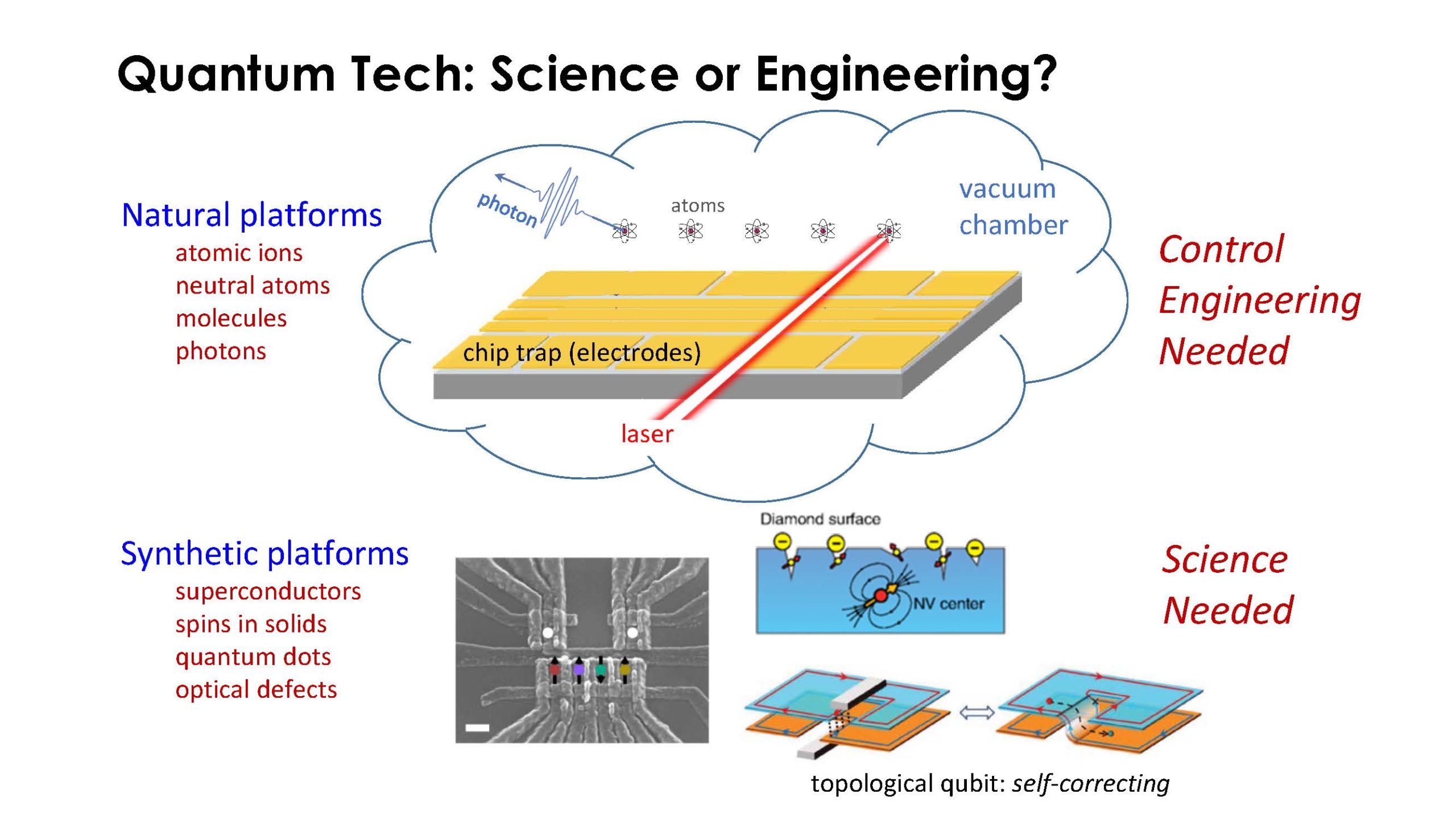
At the end of the computation, a resonant laser is aimed at all ions simultaneously collapsing the ions down to one of two states. Each ion either glows (1) or is darker (0) and reading that delta becomes binary result string.
One of the big innovations is shrinking all of this down so that it does not need room size or bigger space to run. If you have ever seen a D-Wave system, as an example, there is the system, and then a big chiller in the parking lot or elsewhere outside the building. IonQ instead is using the methods above in a relatively small space. The goal here is to minimize the size, weight, power, and cost to make it practical to scale out the solution.
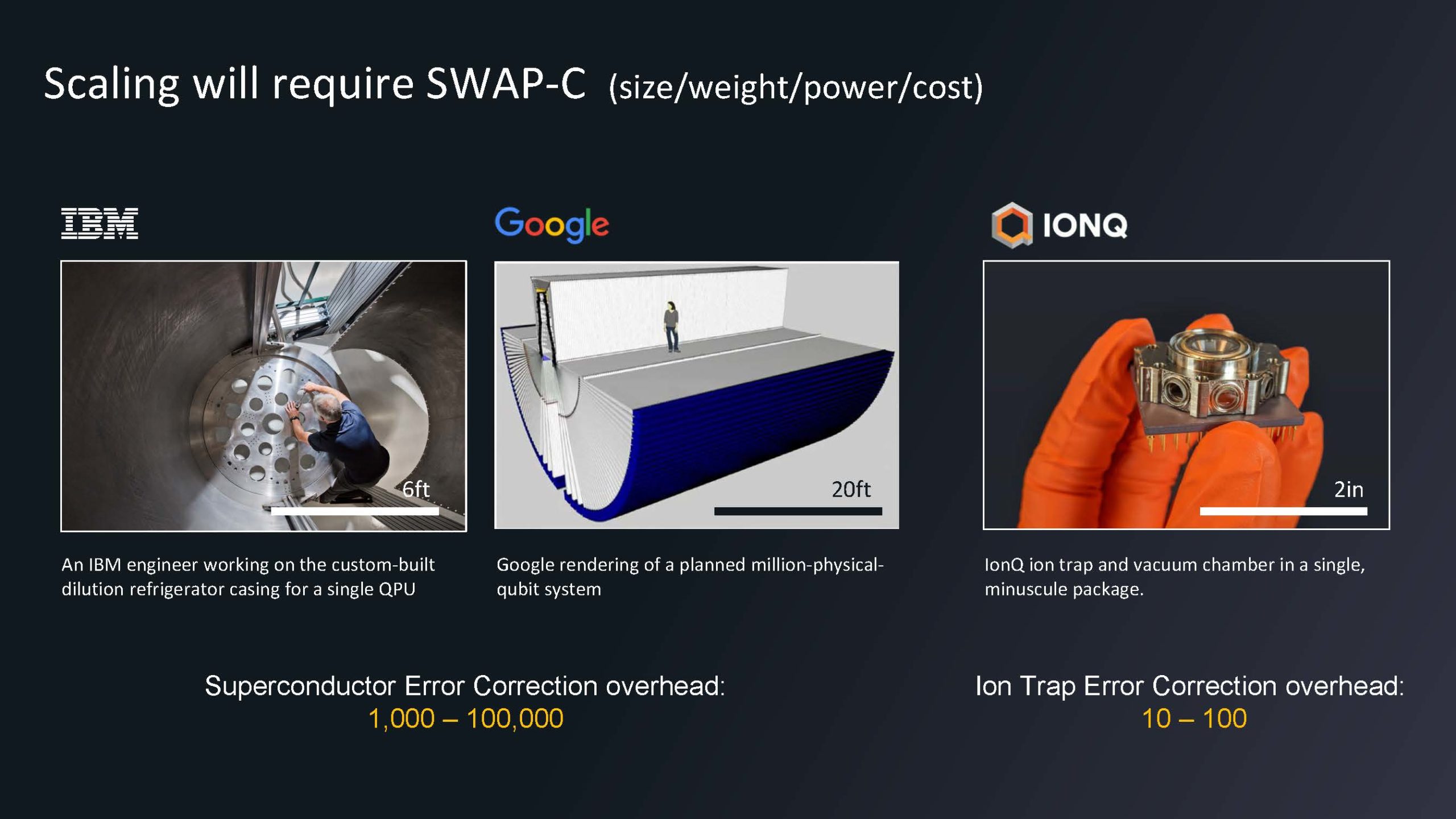
In terms of scaling out, it has gone from lab scale to rackmount scale in roughly five years. on the diagram below, if you look at the 2025 vision, that is using optical distribution and modularized quantum chips to scale out the solution in something that looks more akin to traditional data center deployments.
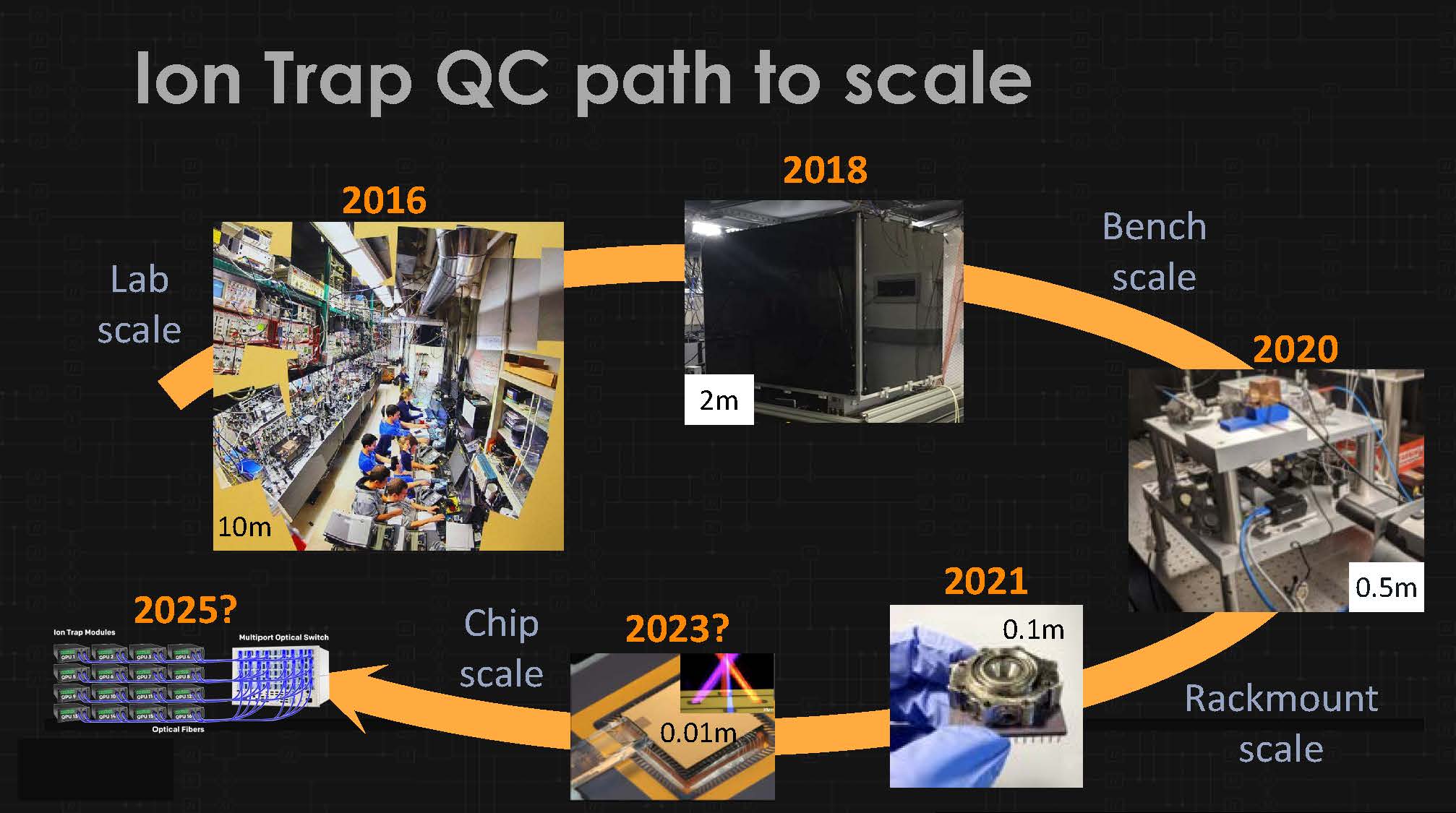
IonQ has systems that can be used via various cloud providers today.
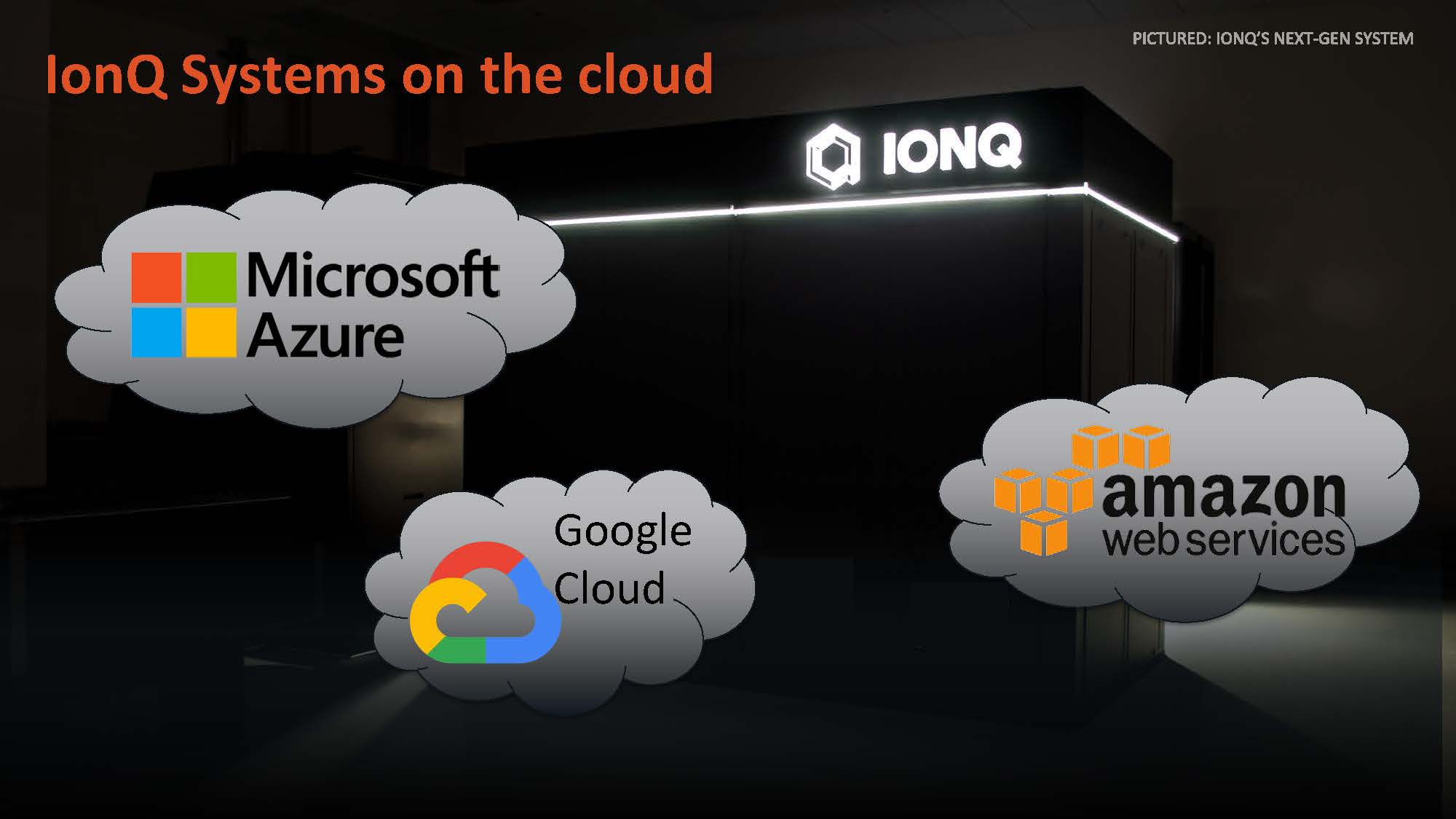
Since the problem is scaling up, IonQ is exploring ways to use multiple zones to grow beyond the 70-100 qubit limit they are at today.
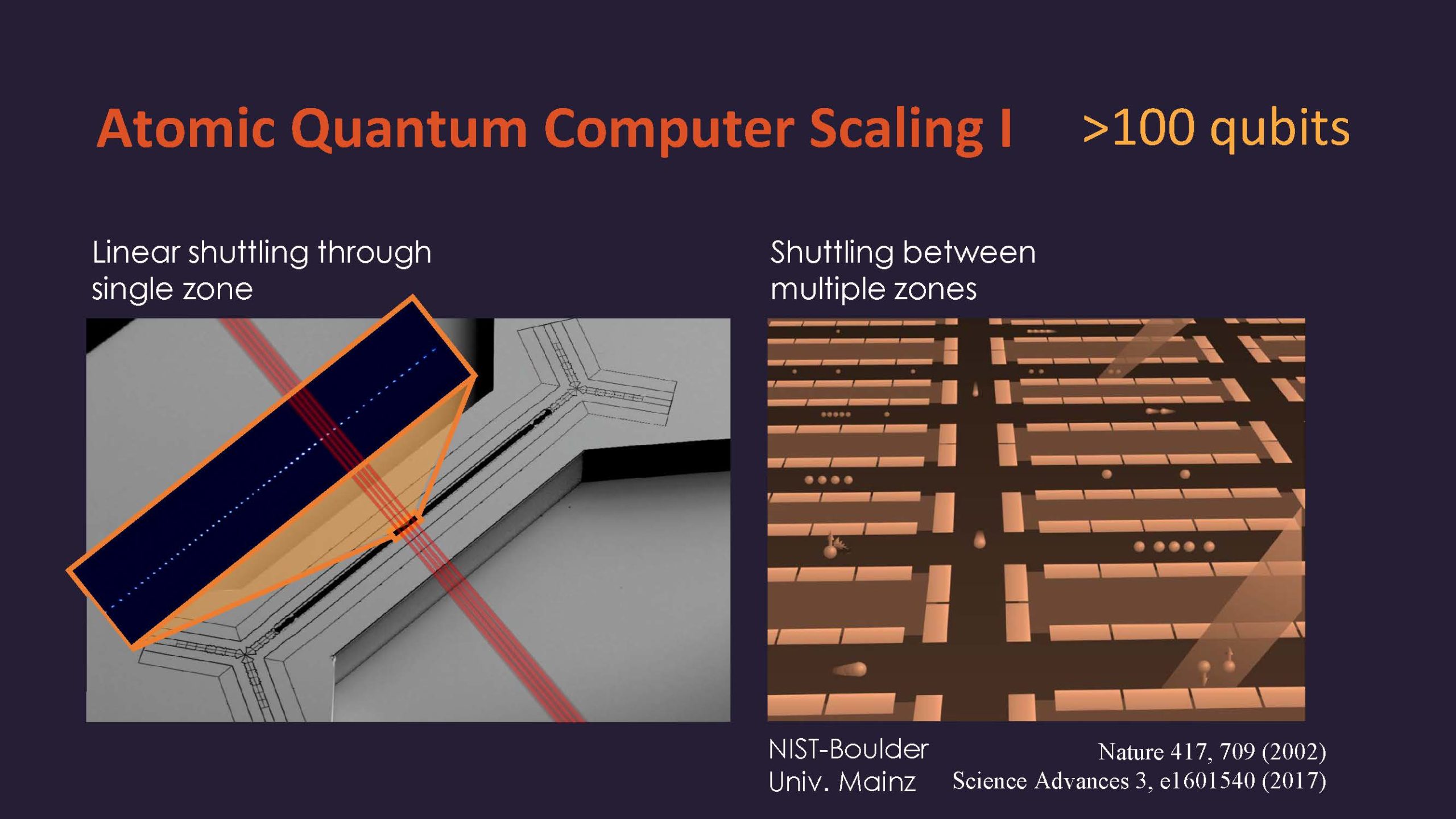
Drilling down a bit into that 2025 solution, here is the slide using an optical switch to scale out to many of these smaller chip solutions.
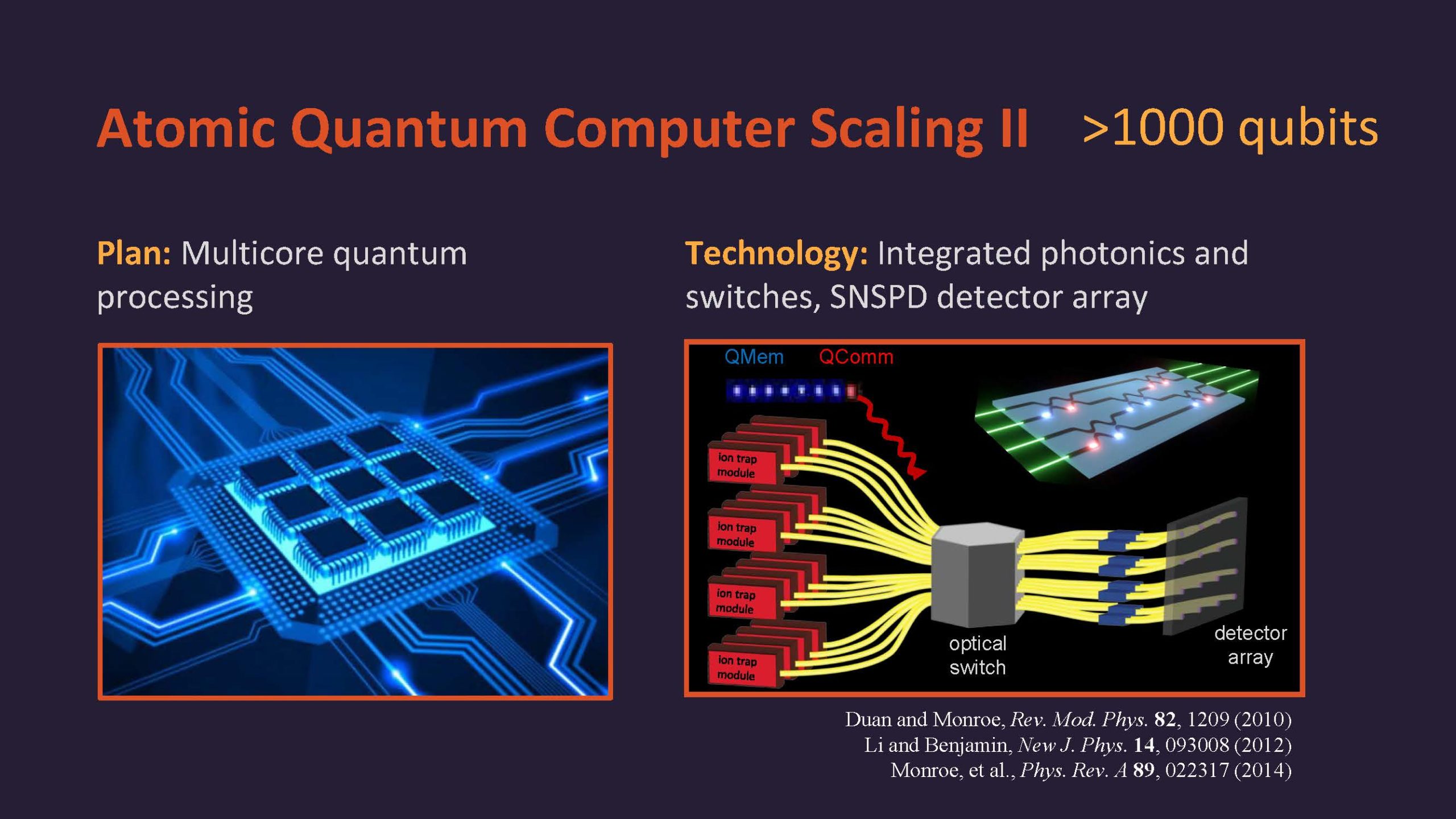
The goal is to scale both the number of qubits as well as scaling the number of quantum gate operations that can be stable enough to execute to get more processing power. Many qubits that can only sustain a small number of operations are not overly useful, nor are a low number of qubits that can sustain a higher number of operations. Both need to scale.
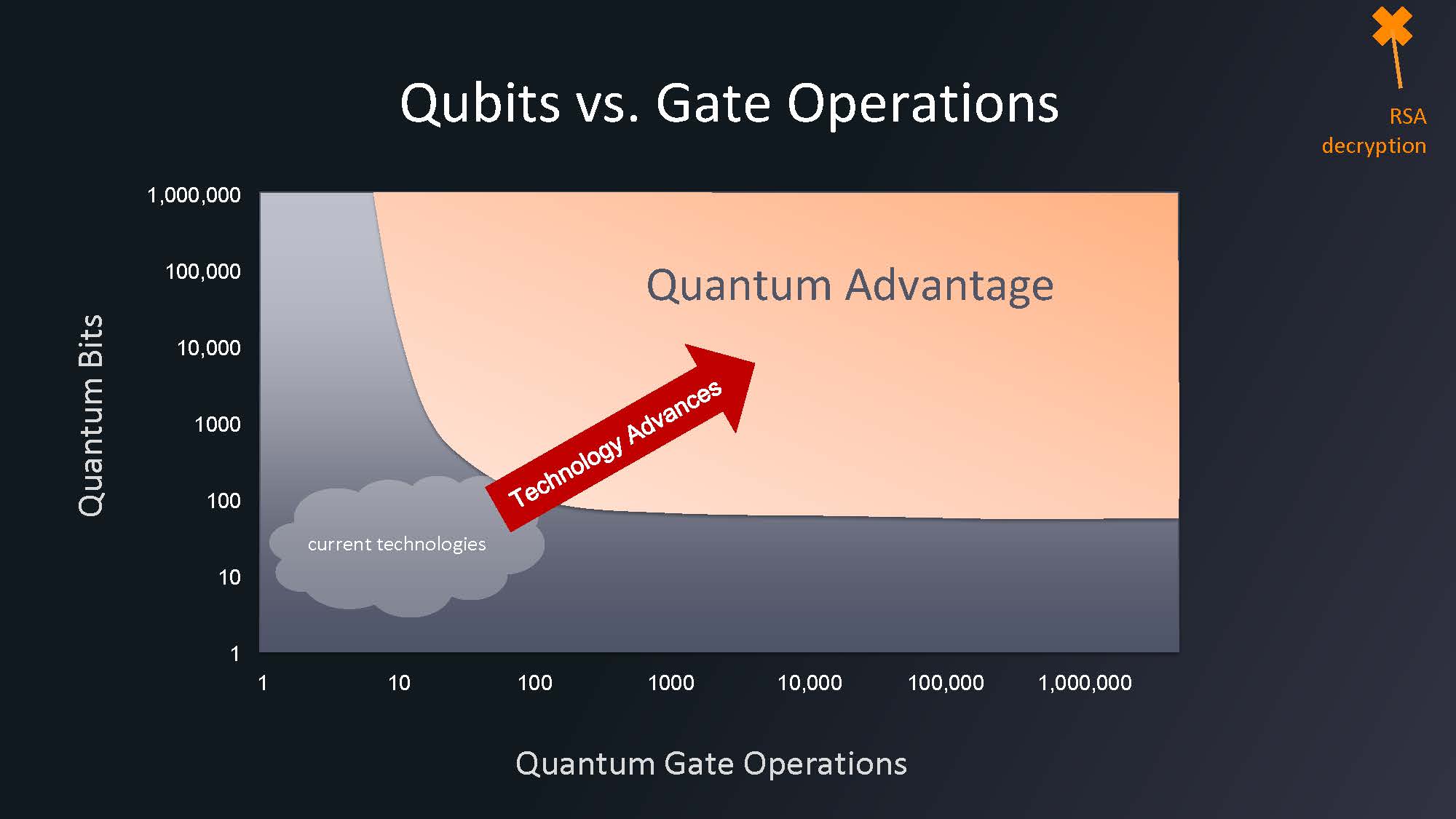
In terms of quantum maturity, there is a question regarding where we are in the cycle. IonQ even mentioned it may be closer to a peak which means that the next step is showing useful work.
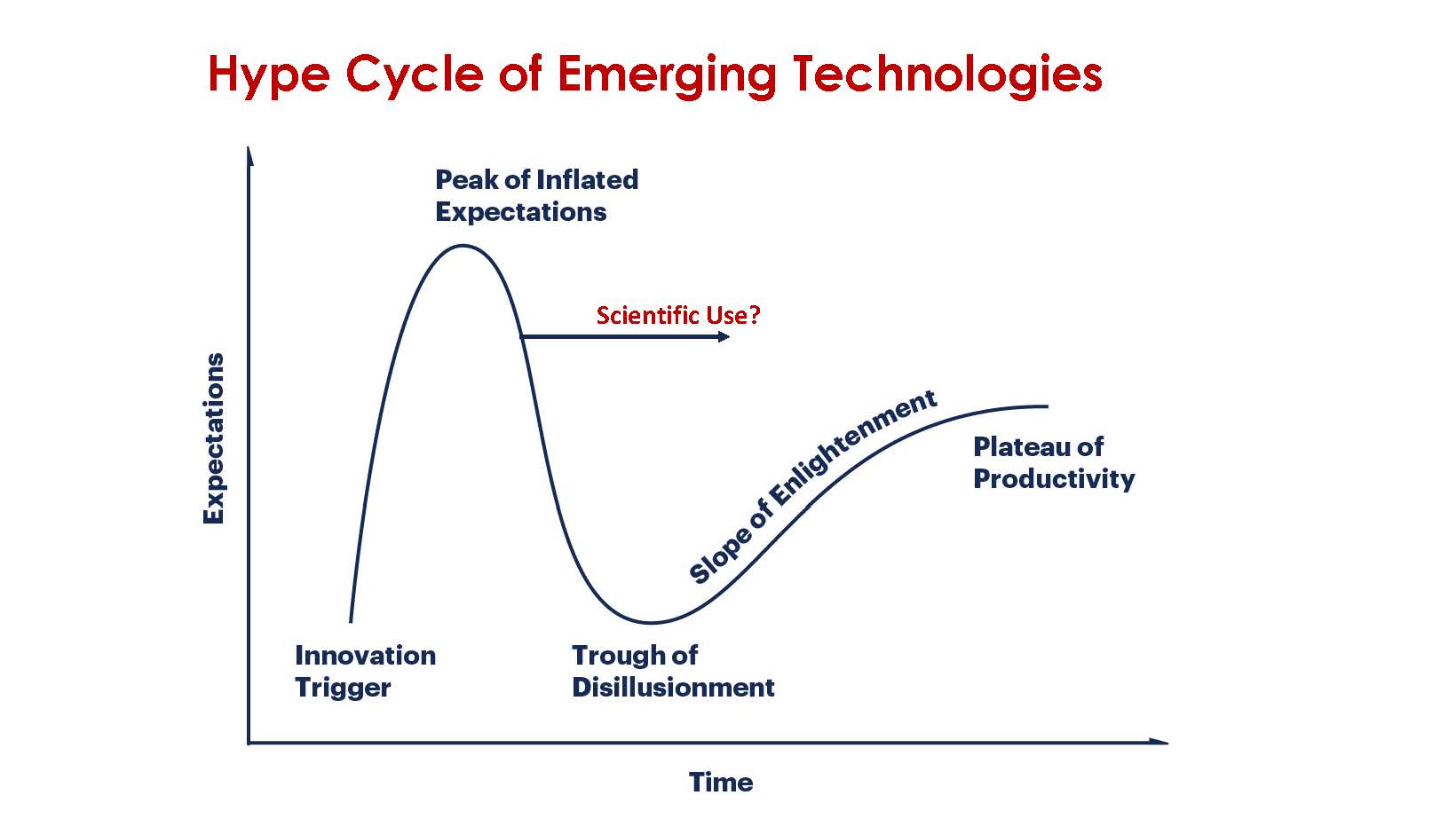
These are the maturity phases for Quantum from BCG in 2019. If that is to be believed, then we should be exiting Phase 1 in the next 1-3 years.
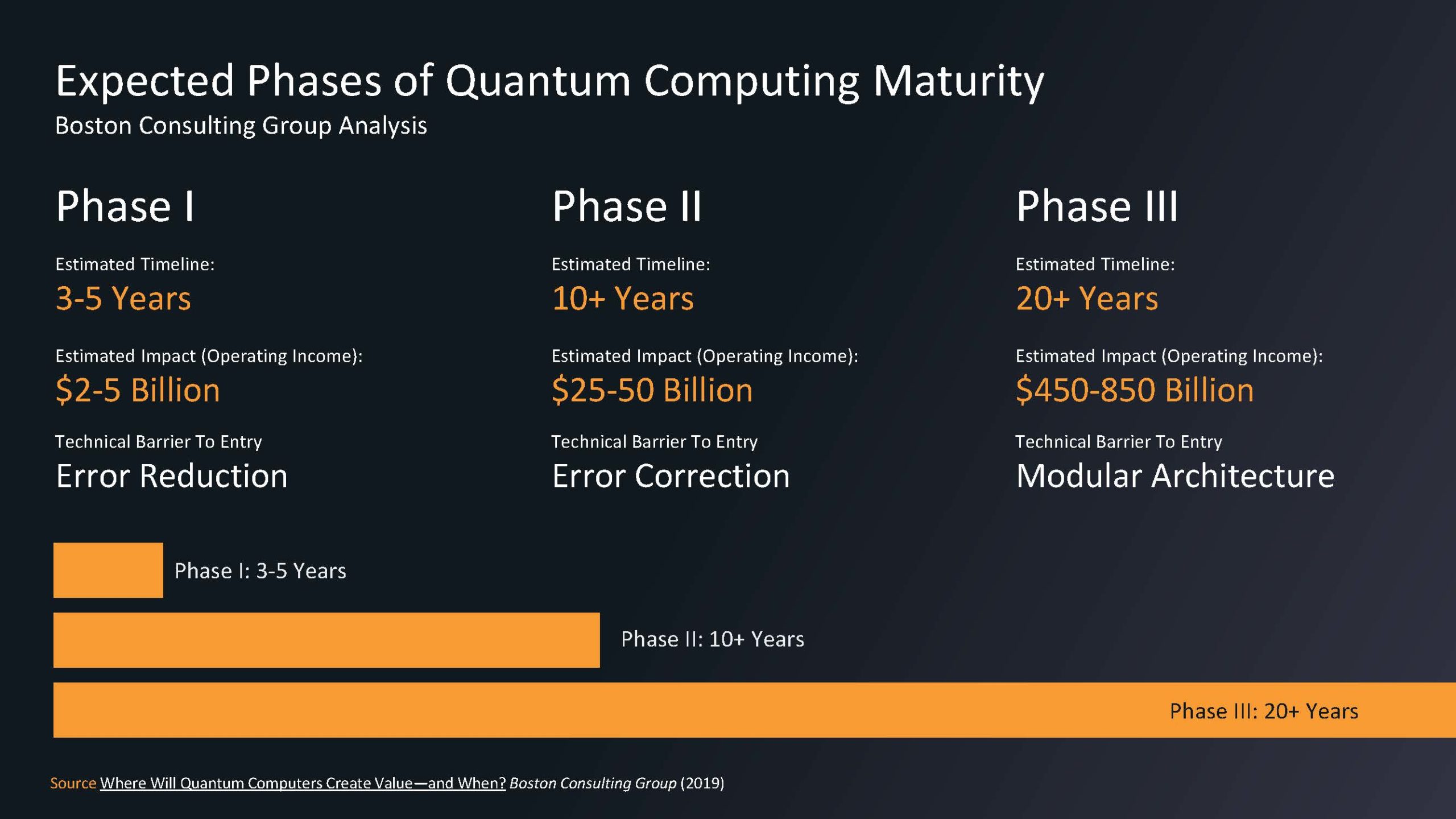
Sill, there is a lot of market potential here.
Final Words
At the end of the day, do we expect every reader is looking to buy or program a quantum computer this year? Absolutely not. Still, for a Friday heading into a holiday weekend, we wanted to focus on what is possible. This is very high-end technological advancement that is just cool to see.
I tried my best to make this as easy to follow for the average STH reader as I could and may have failed miserably in the process. If I did, apologies.

